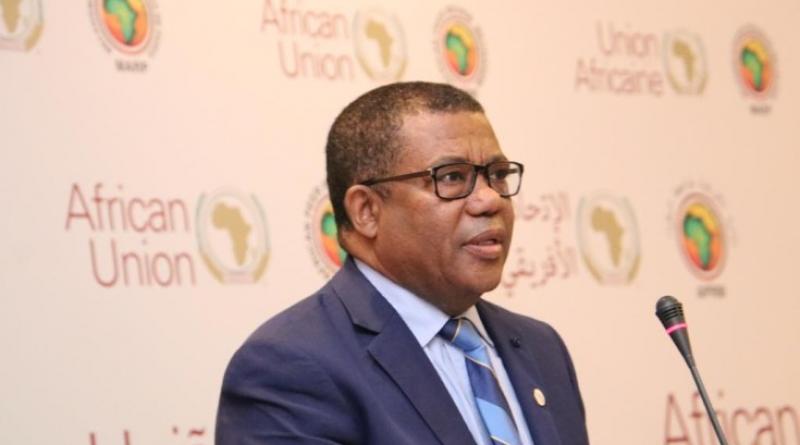Africa: The Shift to Virtual World - An Experience Worth Archiving.

Sustainable Development Goals Center for Africa (Kigali)
Kigali — The novel Coronavirus, COVID-19, has brought forth unprecedented challenges to humanity across the world regardless of the level of economic development. In the absence of a vaccine or medicine, the only measure that has been deemed appropriate is confinement (shelter-in-place) and the limiting of physical interactions through social distancing and self-quarantining.
World leaders have unanimously instructed people to stay home at all times with the exception of movement for essential causes and workers. Under this 'new normal' the only feasible mode of communication under these conditions seems to be online connection.
Though uncertain how long this will continue, we are all feeling deeply the induced changes brought on by this pandemic as it is forcing us to change our lifestyles. For starters, we have shifted our work stations from physical to virtual very abruptly. Just like the impact, the magnitude of this change is also enormous. It is beyond changing the workspace from on-premise to online – it is also a change in communication method, manner, timing, style, and intensity of interactions – which strikes several other psychological and attitudinal inductions.
Evidently, the use of virtual facilities during this pandemic has extended beyond our usual social media and location tracking functions to include other private, official, and public duties. Business owners now implement online video-calling to keep in contact with their clients and partners; public services with their staff; teachers with their students; pastors and clergies with their congregations; and even doctors with their patients via telemedicine.
Arguably, the world would have been in a complete blackout during this pandemic even a mere ten years ago had it not been for the technological infrastructure and virtual capacity we have in possession today. If it were not for the online services, the interruption in communication could have not only left everyone in apprehension and anxieties without instant access to information on our smartphones, but also in increased loneliness due to a complete halt in long-distance travel for an extended period of time without video-communications.
This crisis like no other (in terms of pace and magnitude over a spell) and yet uncertainty and intrigue prevail. It has happened across the board and at the same time; there is neither data nor hindsight to use as a trajectory. Having stemmed out of panic rather than preparation, responses are at best impulsive and abrupt in most nations, and particularly in poorer nations. The time to "choose" the best response is simply not there.
Worst still, Africa lags behind both developed and other developing countries in several ICT indicators. For instance, it is estimated that 47 percent of the world's population (more than 3.5 billion people) have access to the internet, compared to just 24 percent access within Sub-Saharan Africa (SSA).
Africa also remains the region with the lowest access to mobile cellular networks world-wide. Meanwhile, Africa has the most expensive broadband prices. In the Democratic Republic of Congo, Chad, and the Central African Republic, for example, the cost of 1GB data is over 20% of the average monthly income. The cost of mobile broadband pricing for 1GB data varies from $34.25 in Equatorial Guinea (most expensive) to $ 0.98 in Sudan (least expensive).
Across Africa, the average cost for just 1GB data is 7.12% of the average monthly salary and this limits accessibility for the most vulnerable people. This suggests that a significant number of people are missing out on the quite literally life-altering benefits arising from internet connectivity during the inevitable shift to the virtual world that is taking place globally. Even for those with current access, high costs along with data traffic and congestion remain key challenges during this pandemic.
Had this been a deliberate move to test the effectiveness of the two systems: physical to the virtual world; the scale and the scope of the sample would have been as powerful as census with the maximum level of confidence. The question, therefore, is how best one could jump to this inadvertent opportunity and learn about and draw lessons from the experience in a systematic way.
The tangible and non-tangible experiences at individual, household, and institutional levels should all be documented. The stocktaking should capture the qualitative version of the story.
How easy was it to adjust? How did people feel about being in front of cameras for hours without having control over their audience? How about turning classrooms into cloud recordings? It could go on and on. The bottom line, however, is to ask whether the virtual world is capable of substituting or complementing our physical realities? If so, when and how? Which sectors are in compliance and which are not? Is this a medium or long-term project?
In learning about this transition, we should also consider the positive externalities or unintended consequences: US fossil gas consumption has dropped 30 percent since March 2020, and EU countries have reduced carbon emissions by about 58 percent around the same time. Given our dire position amidst alarming climate change, it may be a legitimate time to consider that we should enhance at least parallel use of virtual technologies for routine businesses where the physical meetings can be avoided in order to continue fostering these positive environmental externalities.
With the limited exposure we all have during this time, I believe that as useful as it is as an effective backup, deductively the virtual capacity could by no means could substitute the physical world. Though the degree of technological integration and efficiency will vary between sectors (Industry 4.0 sectors such as IoT, wearable technologies, industrial automation are already well underway with this integration) it is now more apparent than ever that our public sector services such as hospitals, public education, and social work must utilize technological applications in a new manner as they far from substituting the need for face-to-face communications.
Though the bottom-line situation may not be that different, Africa is not endowed with well-stretched and functioning physical structures that allow for the possibility to take short cuts and catch up advancing on virtual capacities and reaching out hundreds of millions away from the grid and with no all-weather infrastructure to communicate. Hence, this requires a proportional speed of reactions for the unprecedented level of challenges faced.
Dr. Belay Begashaw is director general of the Sustainable Development Goals Center for Africa (SDGC/A)
24 April 2020
allAfrica




